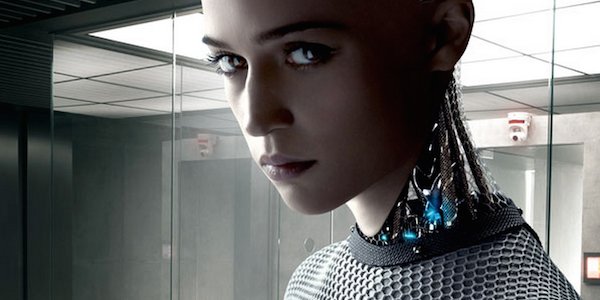How Ex Machina Was Originally Going To End

Warning: The following contains spoilers for Ex Machina and should be avoided at all costs if you haven't already seen the film. Bookmark this page and come back after you've seen the film.
When you've got a good ending that gets your audience riled, it's bound to keep people talking. Ex Machina is definitely one of those movies, and though we explored the big debate about the conclusion previously, we apparently missed something. Whether you liked the ending the film used, or you think it should have ended at a different, "more logical" story point, you're probably going to agree that the newly revealed original ending definitely comes out of left field.
Den Of Geek ran an interview a couple of days ago with Ex Machina stars Oscar Issac and Alicia Vikander, and they actually revealed the details of an alternate ending that would have serious implications involving the way that audiences looked at the entire film. Interestingly enough, the alternate ending is one of those concepts that's still a little difficult to wrap your mind around, even after two people have explained it to you.
Before we get into the remarks, though, let's recap the relevant pieces of the ending. Ava gets out of the lab on Caleb's last day of his stay, and she meets the helicopter that's made its way to the island to pick him up. The way the movie currently has this scene play out is via a long shot where we see a fully clothed/skinned Ava meeting with the helicopter pilot, and there's some dialogue exchanged. We never hear the dialogue, but we see the pilot talking to Ava before the chopper loads up and takes off. The reason there is no dialogue in the scene probably has something to do with the way the film was supposed to end. According to Alicia Vikander, the film was supposed to conclude with the following:
It was [the pilot's] line [and] it was a very cool thing. You saw his face moving, but from her point of view, it was just like pulses and sounds coming out. That’s what she reads.
Oscar Issac offered some back up with the following clarification:
So in that scene, what used to happen is you’d see her talking, and you wouldn’t hear, but all of a sudden it would cut to her point of view. And her point of view is completely alien to ours. There’s no actual sound; you’d just see pulses and recognitions, and all sorts of crazy stuff, which conceptually is very interesting. It was that moment where you think, ‘Oh she was lying!’ But maybe not, because even though she still experiences differently, it doesn’t mean that it’s not consciousness. But I think ultimately that maybe it just didn’t work in the cut.
After reading both accounts, and thinking a little bit about Ex Machina itself, that alternate ending sounds like it would have thrown audiences for even more of a loop. The implication is that Ava's drawing of Caleb, or any person for that matter, is all a product of reading how sound and vibration paint that picture. Ava doesn't hear us, but she understands us – and the implications of that are even more frightening if you take into account that if she ever tried to hunt you, staying silent wouldn't do a damned thing. However, audiences might not have understood that in the first viewing, and as such the original concept that fits with the clues given throughout the film is instead replaced with an easier, but still chilling ending.
Ex Machina is in select theaters right now, and you should probably see it before someone spoils it for you by accident.
Your Daily Blend of Entertainment News

Mike Reyes is the Senior Movie Contributor at CinemaBlend, though that title’s more of a guideline really. Passionate about entertainment since grade school, the movies have always held a special place in his life, which explains his current occupation. Mike graduated from Drew University with a Bachelor’s Degree in Political Science, but swore off of running for public office a long time ago. Mike's expertise ranges from James Bond to everything Alita, making for a brilliantly eclectic resume. He fights for the user.
